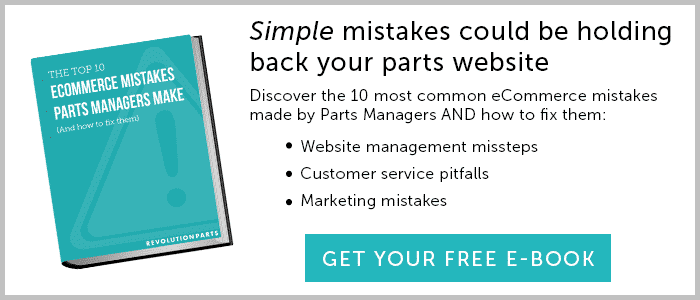Shipping is one of the major differences between online and in-store purchases, and many of your shoppers will want to know the details before they complete their purchase.
Placing an easy-to-understand shipping policy on your website is an easy way to cut down on customer questions. A high-quality shipping policy has other benefits, too, like establishing rules with your customers that protect your margins in the long run.
For example, a lot of dealers we work with won’t sell to international shoppers. These dealers decided that international shipping fees and customs forms simply isn’t worth the added hassle. But international shoppers sometimes get angry about being denied service, and press the dealer to change the rule.
Dealers that have an established shipping policy in place can use it to stay strong and ship on their own terms. International shoppers can clearly see “No international shipping” on the policy, and the authority of the policy makes it more difficult to argue against.
Use this opportunity to establish rules upfront with your customer and ensure everyone can stay on the same page. Here are some tips for setting up your shipping policy.
1. Where should you place the shipping policy?
Your shipping policy should be easy to locate on your website, along with other information customers will need to know—warranty info, return policy, and your contact details.
It’s also a good idea to link to your shipping policy during the ordering process, so customers can reference it before they finish placing their order.
If you’re selling on other marketplaces like Amazon or eBay, we recommend that you link or copy-paste your shipping policy onto your seller page and each item’s description page.
After the customer’s order is placed, an email confirmation is another great spot to provide a link to the necessary information. Along with the customer’s tracking number, let your customer know where they can read your full shipping policy.
2. What information should you include in the shipping policy?
Think of it this way: if you bought something online, what would you like to know about the shipment of your order?
Many customers are interested in knowing:
- When the order will be processed (1-2 days?)
- Shipping carrier (FedEx, UPS, USPS?)
- Estimated time to ship
- If you provide a tracking number
- If you offer expedited shipping
- How much of a delay to expect for out of stock and backordered items
- How the customer will be contacted in the case of unforeseen issues or delays, such as weather or a discontinued part.
If there are any special rules you put in place, let your customers know here. For example, customers that list different billing and shipping addresses have an increased chance of being fraudulent. If you avoid this risk by only shipping to the billing address, then you need to let customers know about this rule in your shipping policy.
Be sure to include how you handle special shipping circumstances, such as international, oversized, or hazmat shipping.
3. How should you format the shipping policy?
Many dealerships organize each piece of information in a bulleted list, in order to make the policy easy to skim and comprehend.
Don’t use any fancy fonts—keep it easy to read with a basic one, like Calibri, Arial, or Verdana. Do not write the shipping policy in all caps. The key is clarity.
Consider the organization of your list, too. The most basic details should be near the top, such as shipping carrier, when the order will be processed, and estimated delivery time. Since this is information that applies to every customer, it should be the first things they read.
More specialized shipping information, such as international or oversized shipping policies, should be lower on the list. Customers only need to read this part of the shipping policy if it applies to them, so you can save your other customers some time.
Of course, even if you have a fantastic shipping policy page, you’ll still get customer questions about it. That’s unavoidable. But by providing information in a way that’s easy to find and understand, you’ll appease a lot of potential shoppers. They’ll feel more confident in their purchase knowing what to expect, and customer confidence means more sales.





